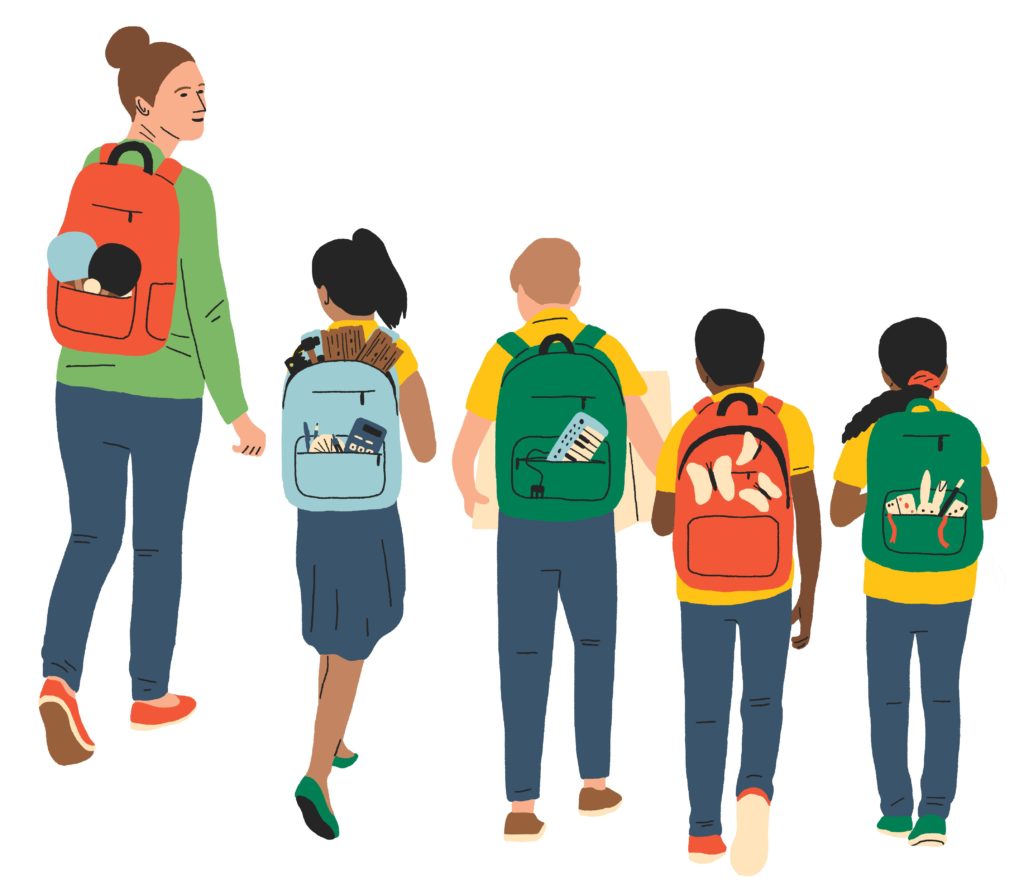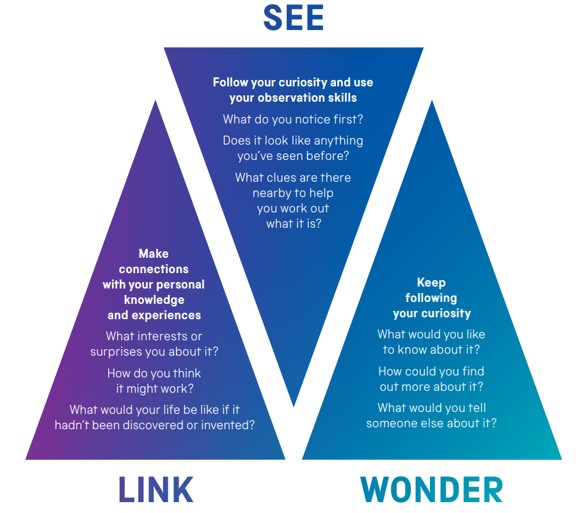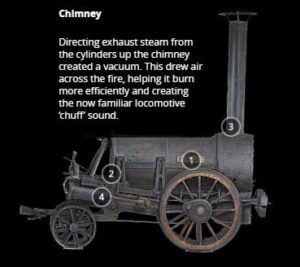Using objects in teaching, whether historical artefacts, natural history specimens, paintings, drawings, sculptures or architectural features, can be a powerful way for students to learn. It’s student-centred and active, sparks curiosity, generates discussion and helps develop analytical skills. Research has shown that when learners interact with objects and with each other, they construct meaning for themselves, resulting in more engaging and memorable experiences.

All of our visitors are learners, but we know that some audiences struggle to engage with our objects, be it online or in person. Family and school visits often include some self-led exploration of object-rich galleries, which may contain unfamiliar objects. Teachers who want to use our objects in their teaching often don’t have the time to trawl through extensive online catalogues. Luckily, with a bit of extra effort museums can support these audiences to explore our collections independently.
Digital learning resources can be a great way to achieve this. Bearing this in mind, what are some of the unique opportunities and challenges the medium can bring?
Opportunities
- Reaching a greater number of people beyond those who are able to visit in person.
- Catering to a range of preferences and styles.
- Allowing users to ‘get closer’ to objects which might be displayed behind glass.
- Opening up new ways to encounter objects.
Challenges
- Compared with object handling, difficult to replicate powerful tactile experiences e.g. feel/ weight/ smell of an object.
- Question-based facilitation techniques responding to real responses may not be an option.
At a basic level, using digital for object engagement can take two (not mutually exclusive) directions:
- Using digital to share objects.
- Using digital to facilitate the object encounter.
Our team have generated a number of online object-based learning resources which offer a range of experiences. Our digital learning resources range from very playful examples of informal learning to those with specific links to the national curriculum. There are resources with a specific object focus and resources that act as a more general tool for object engagement, providing structure for object enquiry but allowing the user to form their own experience.

Our See, Link, Wonder discussion tool was developed in response to the challenges faced by teachers and families on a museum visit, to upskill and empower them. Much as we’d like to, we can’t personally meet every person who visits our museums so we created an online animation to convey the concept. We also share the See, Link, Wonder approach with teachers who attend our Academy courses.
Our Treasure Hunters app was developed for families and launched last year. It combines fast-paced gameplay with simple yet powerful object engagement which encourages users to make personal connections with museum collections. It’s open-ended and can be played in any location, whether in a museum, out and about, or at home.
Image banks are a really simple, low-cost way of getting museum collections into classrooms. Teachers tell us that what they need most is tools for teaching which can be adjusted to suit the needs of their students. By bringing together images (on web pages, in Powerpoint presentations or PDFs for example), museums can provide helpful inspiration on how their collections can support the curriculum.

3D imaging makes it possible for museums to push the concept of image banks one step further by providing 3D models of objects. As with 2D images, teachers can use 3D models in a variety of ways such as a mystery object activity, as historical sources, or to introduce a new topic. Evaluation of our pilot 3D objects resource found that it made teachers and students feel “digitally up-close to the objects.”
What reflections have we made?
The digital learning resources summarised take a wide range of approaches, but they do have a few things in common:
- Stimulating discussion
- Sparking curiosity
- Encouraging people to make personal connections with objects
Reflecting on the intersection between digital and object-based learning, my two key takeaways are:
1: Digital should be more than a ‘plan B’
Digital interventions around object-based learning will not succeed if they are thought of as a ‘second best’ option behind handling physical objects. The best digital learning resources will bring the strengths of digital to facilitate experiences which are unique to the format.
2: Don’t just inform – empower
It’s not enough to simply supply digitised objects and expect our audiences to engage with them meaningfully. We need to think carefully about how this engagement will occur and provide opportunities for this to happen. A good starting point is to consider our reflection points and use them to guide us in providing experiences which make people feel confident, curious and empowered.